Imagine stepping into your backyard and being greeted by a beautifully designed gazebo, a perfect blend of elegance and functionality that elevates your outdoor living experience. Whether you’re a novice dreaming of your first project or a seasoned homeowner looking to revamp your space, our guide, “12 Gazebo Design Ideas for Your Next Project,” is tailored to ignite your creativity and confidence in transforming your outdoor area.
With each design idea, you’ll discover practical benefits that extend beyond aesthetics—think increased property value, enhanced leisure, and personalized relaxation spots. This list offers innovative solutions and inspiring concepts that will turn your outdoor space into a personal oasis, ensuring every moment spent outside is both joyful and rewarding. Dive in with enthusiasm, and watch as your outdoor dreams take shape!
Incorporate Nature-Inspired Materials
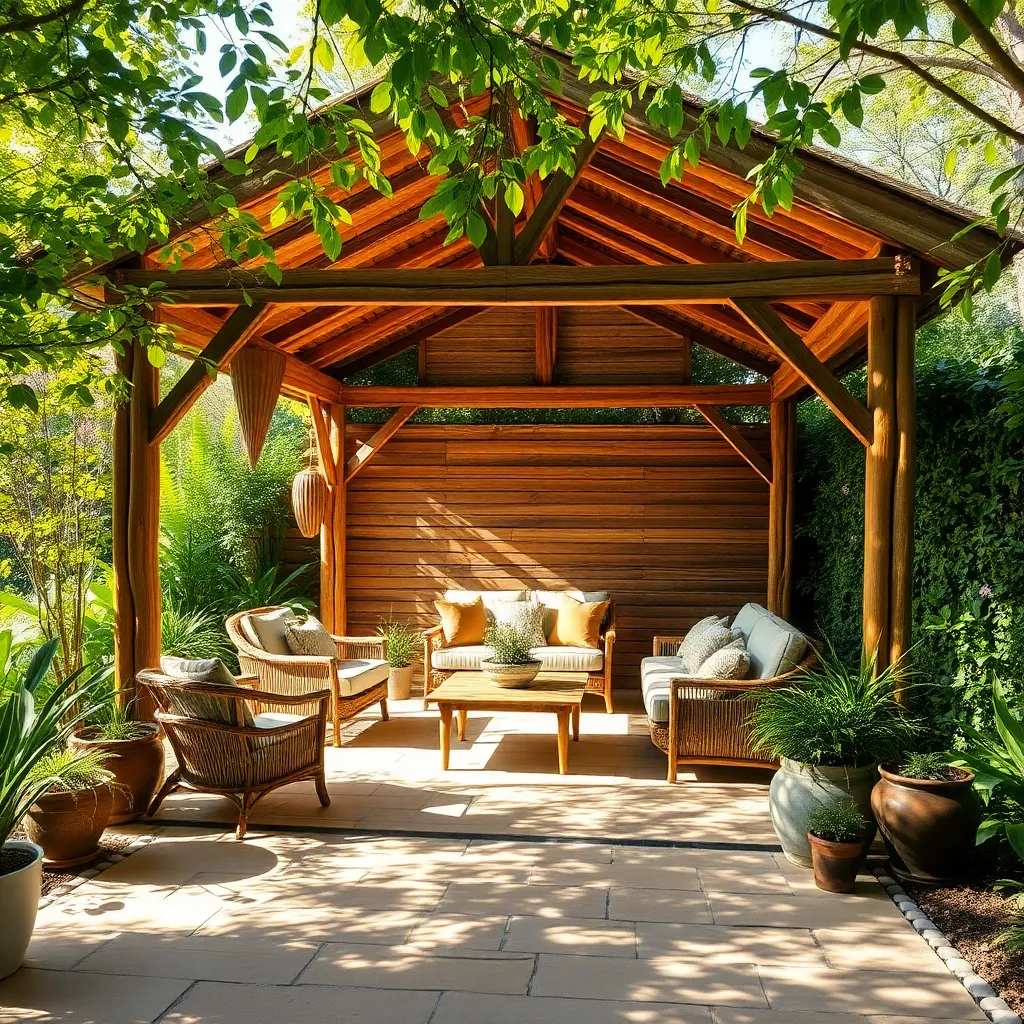
Incorporating nature-inspired materials into your gazebo design can create a harmonious blend with your outdoor surroundings. Consider using reclaimed wood for the structure, which not only adds rustic charm but also supports sustainability. For a more refined look, opt for natural stone or slate flooring, which provides durability and a timeless aesthetic. These materials can withstand various weather conditions, ensuring your gazebo remains a beautiful focal point in your garden for years to come.
Enhance the natural feel by integrating design elements like woven willow panels or bamboo screens as wall features or privacy screens. These materials offer a lightweight, eco-friendly choice that blends seamlessly into a garden environment. For those looking to add an advanced touch, consider installing a living roof with sedum or other hardy succulents, which improves insulation and attracts beneficial insects. By choosing materials that reflect the natural beauty around your home, you create a serene, inviting space that encourages relaxation and connection with nature.
Add Built-In Seating Options
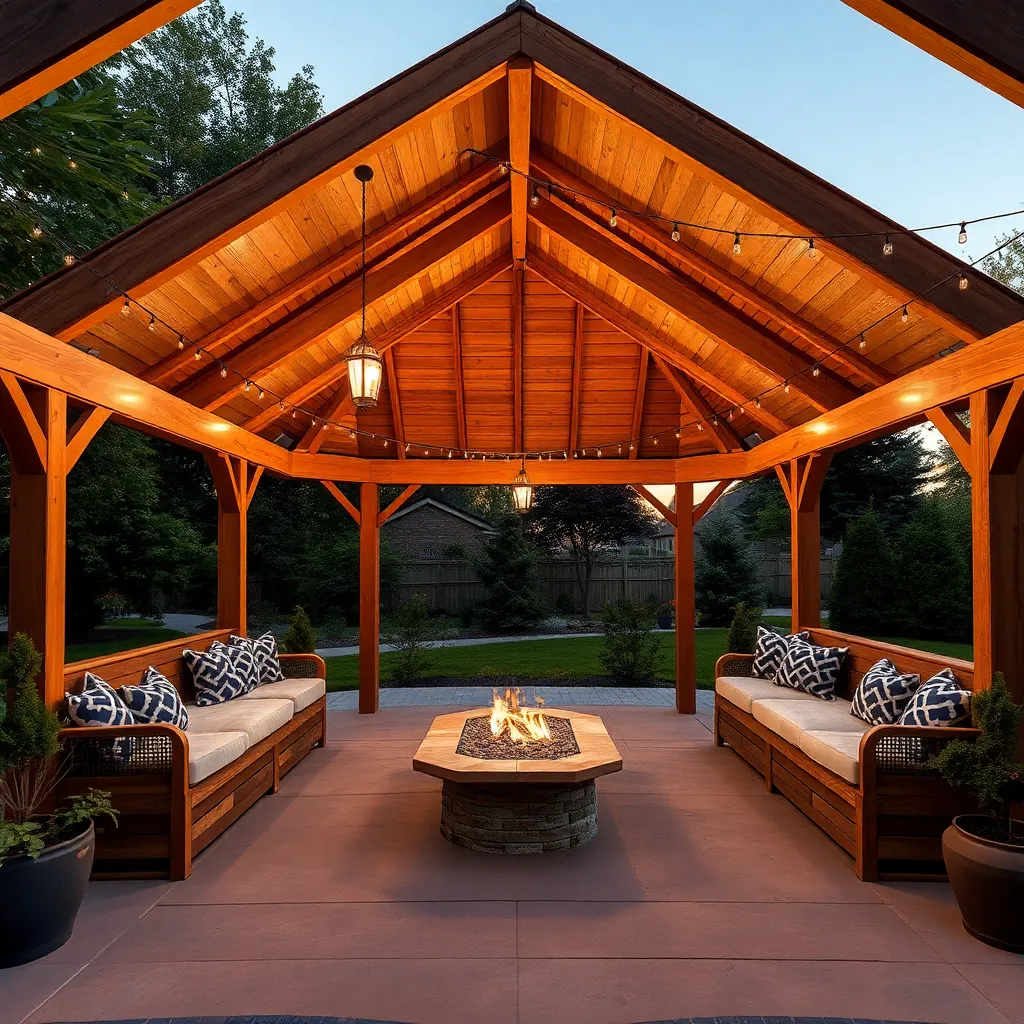
To enhance the functionality and comfort of your gazebo, consider adding built-in seating options. Built-in benches can be constructed using durable materials like cedar or redwood, which resist weathering and blend seamlessly with nature-inspired elements. A simple L-shaped bench along the perimeter of the gazebo can maximize seating while maintaining a spacious feel. For a more advanced touch, incorporate storage compartments beneath the seating to neatly tuck away outdoor cushions and accessories when not in use.
For those seeking a more customized approach, consider integrating seating with a backrest, crafted using complementary materials like metal or stone for a modern touch. Ensure that the seating height is comfortable, typically around 18 inches, with a depth of 16-20 inches for maximum relaxation. Adding outdoor cushions in weather-resistant fabrics can further enhance comfort, inviting guests to linger longer. Whether you’re a novice or an experienced DIY enthusiast, these seating options can transform your gazebo into a cozy retreat.
Utilize Multi-Level Deck Designs
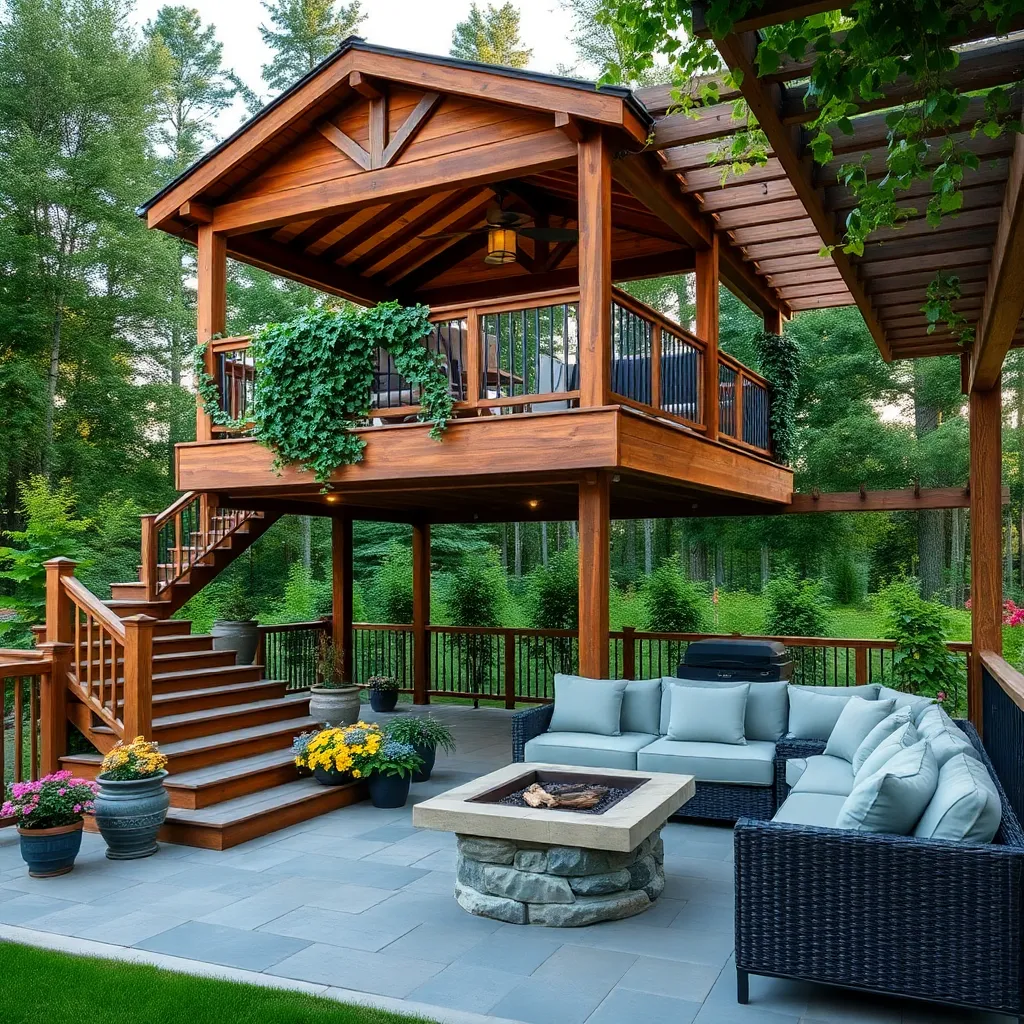
Transform your outdoor space by utilizing multi-level deck designs, which can add depth and dimension to your gazebo project. Incorporate varying deck heights to create distinct areas for lounging, dining, and entertaining. For beginners, start with a simple two-tier design using treated wood or composite materials for durability and low maintenance. Ensure each level is at least 18 inches high for safe transitions, and consider adding wide steps or ramps for easy access.
Advanced DIYers can explore more intricate layouts by integrating built-in planters or seating into the deck structure, enhancing both function and aesthetics. Consider using contrasting materials like stone or tile accents to define spaces and add visual interest. When planning, use weather-resistant woods such as cedar or redwood for a natural look or opt for composite decking for a modern twist. Remember to account for drainage and stability, especially on sloped terrains, ensuring your multi-level deck remains a beautiful and safe extension of your home.
Install Customizable Shade Solutions
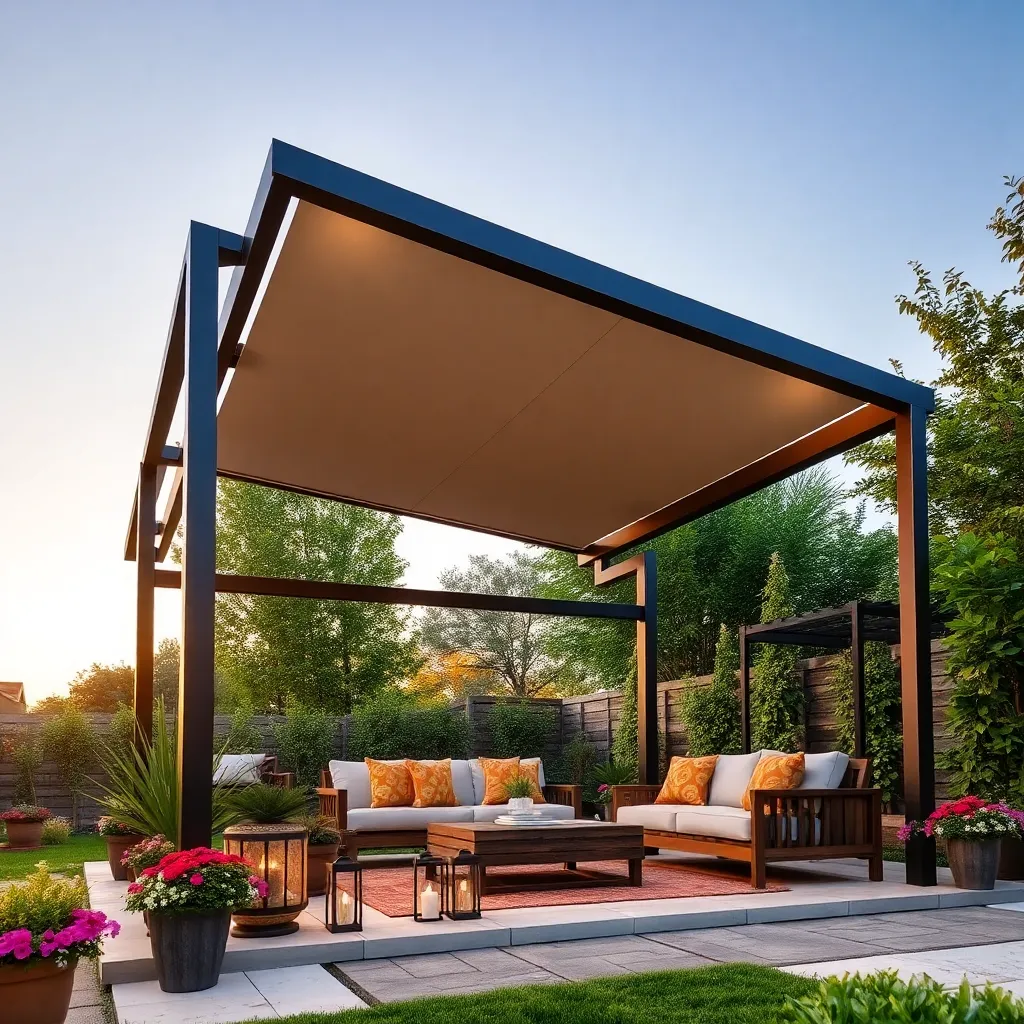
Transform your gazebo into a haven of comfort by installing customizable shade solutions. These can include retractable canopies or adjustable louvered roofs, which allow you to control sunlight exposure easily. For beginners, consider starting with a simple retractable fabric canopy that can be drawn out for shade or folded away to enjoy the sun. Choose weather-resistant materials like acrylic or polyester to ensure longevity and minimal maintenance.
For those with more experience, consider integrating motorized systems for a touch of luxury and convenience. These systems can be programmed to adjust based on the time of day or weather conditions, offering optimal comfort without manual intervention. When designing your shade solution, ensure it complements the existing structure of your gazebo by matching color schemes and materials. This attention to detail will not only enhance functionality but also elevate the aesthetic appeal of your outdoor space.
Select Weather-Resistant Fabric Canopies
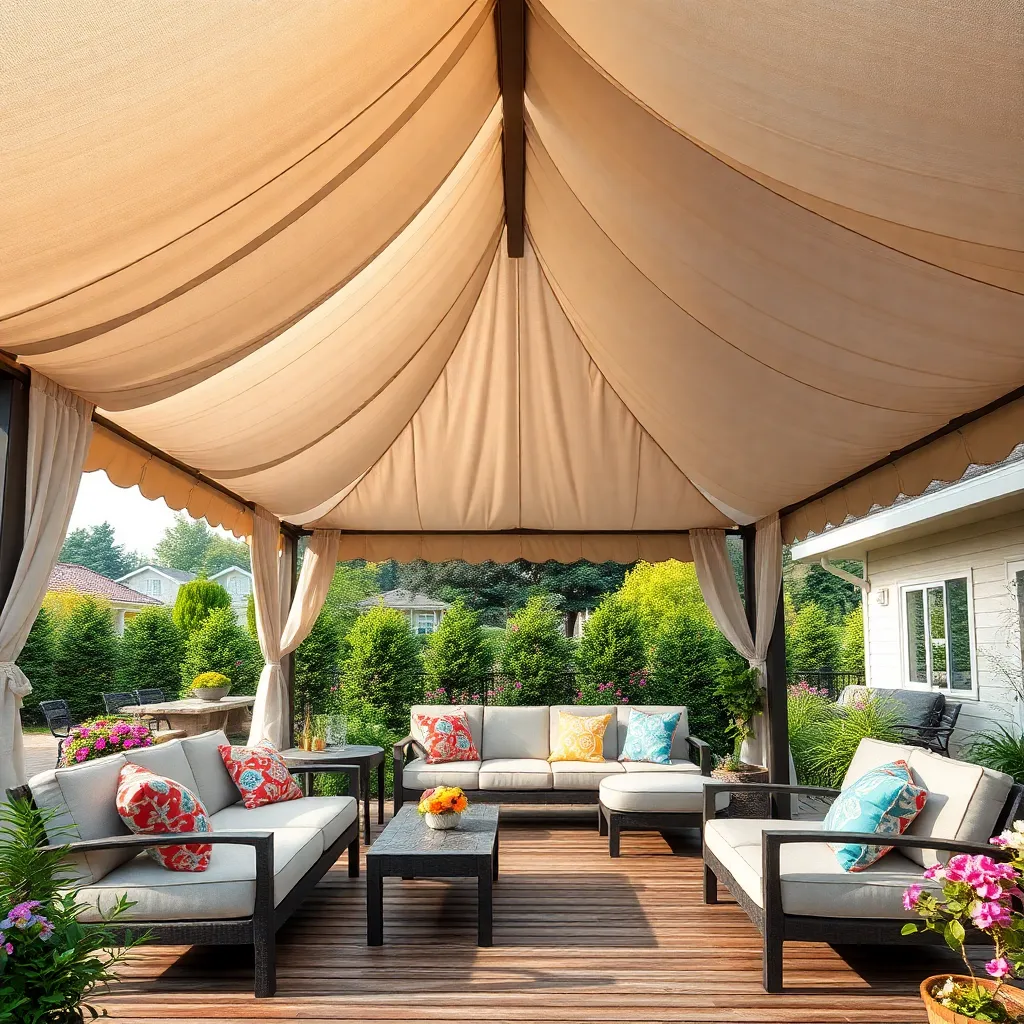
When selecting weather-resistant fabric canopies for your gazebo, consider options made from materials such as polyester with a polyurethane coating or Sunbrella fabric. These materials are known for their durability and ability to withstand various weather conditions, including UV rays and rain. Ensure the fabric is labeled as water-resistant and fade-resistant to maintain its quality and appearance over time. Additionally, opt for canopies with reinforced seams and rust-resistant grommets for added longevity.
For a more advanced touch, explore canopies with built-in ventilation features to allow hot air to escape, which can be particularly beneficial during summer months. Consider adding side panels or curtains made from the same weather-resistant fabric for extra shade and privacy. These elements not only enhance the gazebo’s functionality but also provide a cohesive look. For customizations, measure your gazebo frame accurately to ensure a snug fit, and consider using adjustable tension rods for easy installation and removal of the fabric canopy.
Integrate String Lights for Ambiance
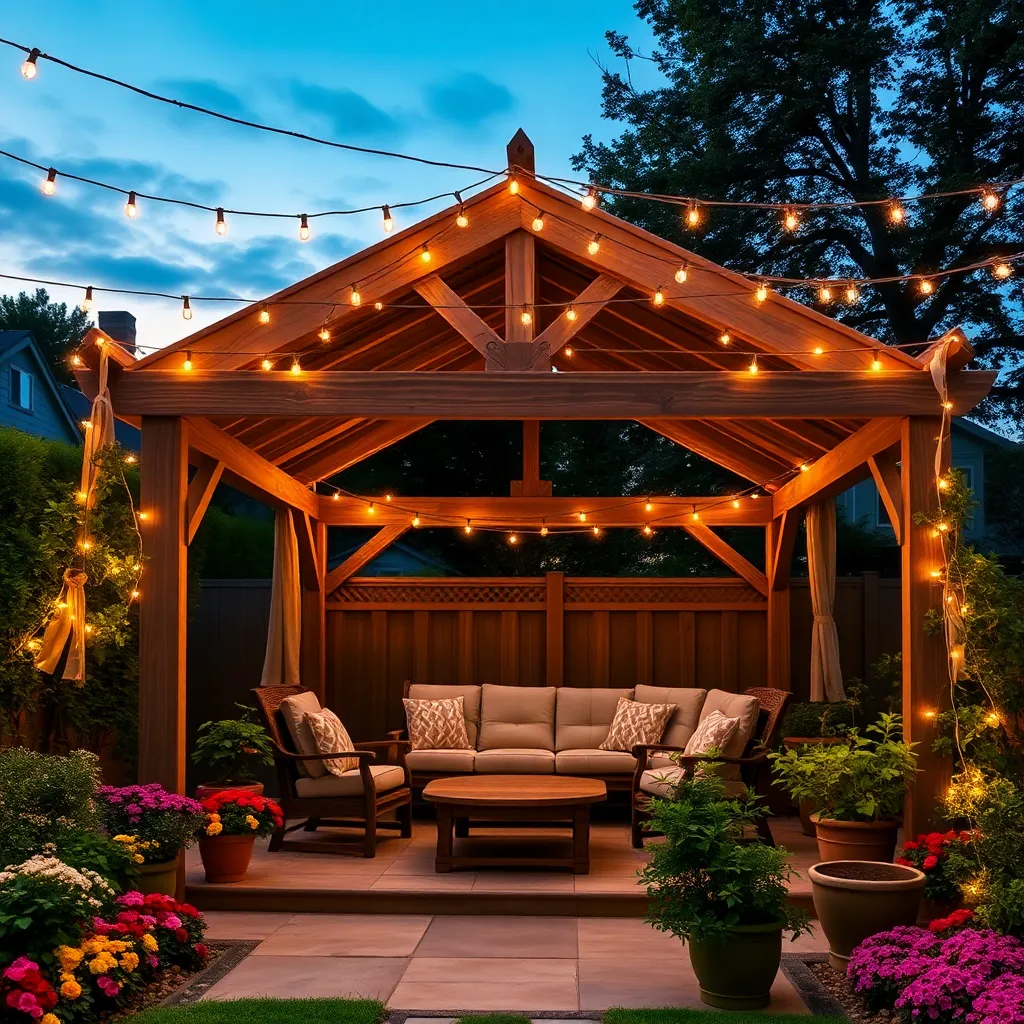
String lights are a simple yet effective way to add ambiance to your gazebo, creating a warm and inviting atmosphere for evening gatherings. Begin by choosing weather-resistant LED string lights to ensure durability and energy efficiency. For a basic setup, drape the lights around the perimeter of the gazebo, securing them with adhesive hooks or clips. This not only highlights the structure but also provides ample illumination for nighttime activities.
For those looking to elevate their design, consider layering multiple strings of lights or incorporating dimly lit Edison bulbs for a vintage touch. Position the lights in a zigzag pattern across the ceiling to create depth and visual interest. Additionally, using a timer or smart plug allows you to automate your lighting, enhancing convenience and energy savings. Whether you’re hosting a party or enjoying a quiet evening, integrating string lights is a versatile, stylish choice that suits any outdoor setting.
Design with Modular Furniture Pieces
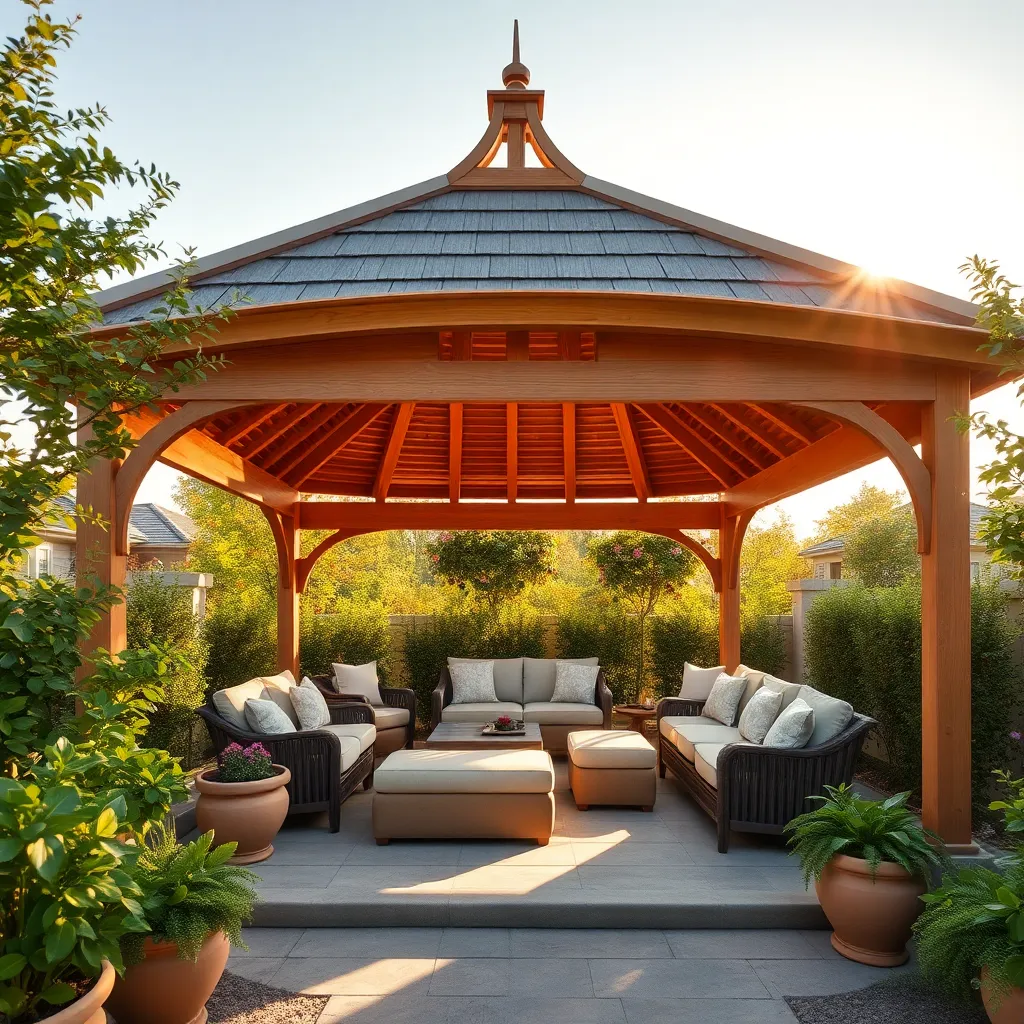
To maximize the functionality of your gazebo, consider incorporating modular furniture pieces. These adaptable elements allow you to customize your outdoor space according to various occasions, from intimate dinners to lively gatherings. Opt for weather-resistant materials like teak, aluminum, or resin wicker, which offer durability against the elements. Beginners should start with essential pieces like a modular sofa or coffee table, which can be easily rearranged to suit your needs.
For more advanced customization, integrate modular sections with built-in storage or adjustable components. These features can enhance your gazebo’s utility without compromising on style. Consider pieces with hidden compartments for cushions or outdoor accessories to keep your space tidy and organized. Additionally, mixing and matching different textured fabrics and colors can add a personal touch and visual interest to your outdoor retreat. Whether you’re a novice or experienced gardener, these versatile options can transform your gazebo into a welcoming sanctuary.
Enhance Privacy with Trellis Walls
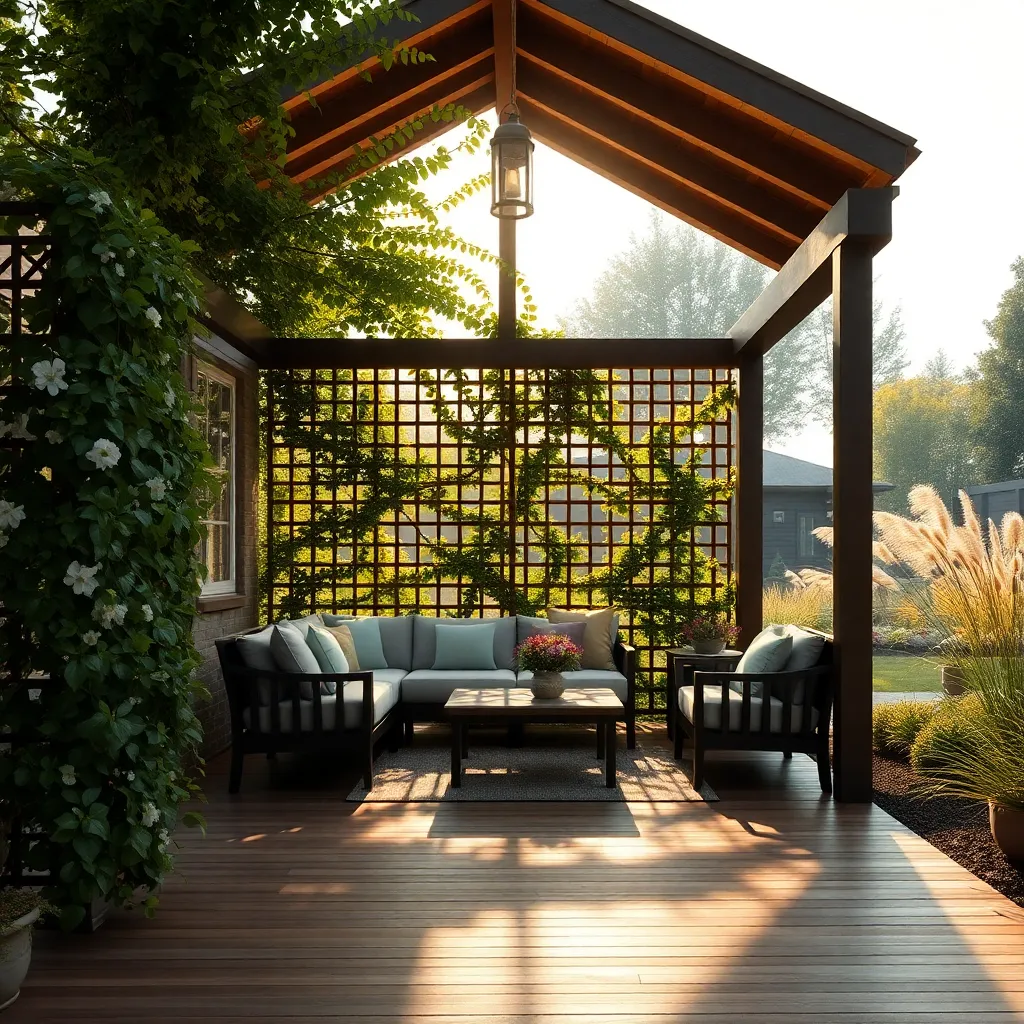
Enhance your gazebo’s privacy and aesthetic by incorporating trellis walls. These structures not only provide a sense of seclusion but also add a decorative element to your outdoor space. Consider using weather-resistant materials such as cedar or redwood for durability and natural beauty. For beginners, pre-assembled trellis panels are a great choice, allowing for easy installation along the sides of your gazebo. Simply attach the panels to the existing gazebo frame with galvanized screws to ensure stability.
For more advanced projects, create custom trellis walls by constructing a wooden frame and filling it with lattice panels cut to your desired dimensions. To add a lush, living element, train climbing plants like clematis or jasmine to weave through the lattice, enhancing both privacy and ambiance. Ensure your trellis is at least 6 feet high to effectively shield your space, and treat the wood with a protective sealant to extend its lifespan. These steps will help you achieve a cozy, inviting retreat in your backyard.
Choose Eco-Friendly Construction Materials

For an eco-friendly gazebo, consider using sustainable materials such as bamboo, reclaimed wood, or recycled metal. Bamboo is a renewable resource that grows rapidly and is incredibly strong, making it an excellent choice for posts and beams. Reclaimed wood not only adds character but also reduces the demand for new timber, helping to preserve forests. Opt for recycled metal roofing to provide durability and a modern aesthetic, while minimizing environmental impact.
Incorporating natural insulation like straw bales or sheep’s wool into your gazebo design can enhance its energy efficiency. These materials offer excellent thermal properties, keeping the space cooler in summer and warmer in winter. When selecting finishes, look for low-VOC paints and sealants to maintain healthy air quality within your shelter. For advanced builders, integrate a rainwater harvesting system to utilize natural precipitation for watering surrounding plants, further enhancing the sustainability of your outdoor retreat.
Create an Open-Plan Layout
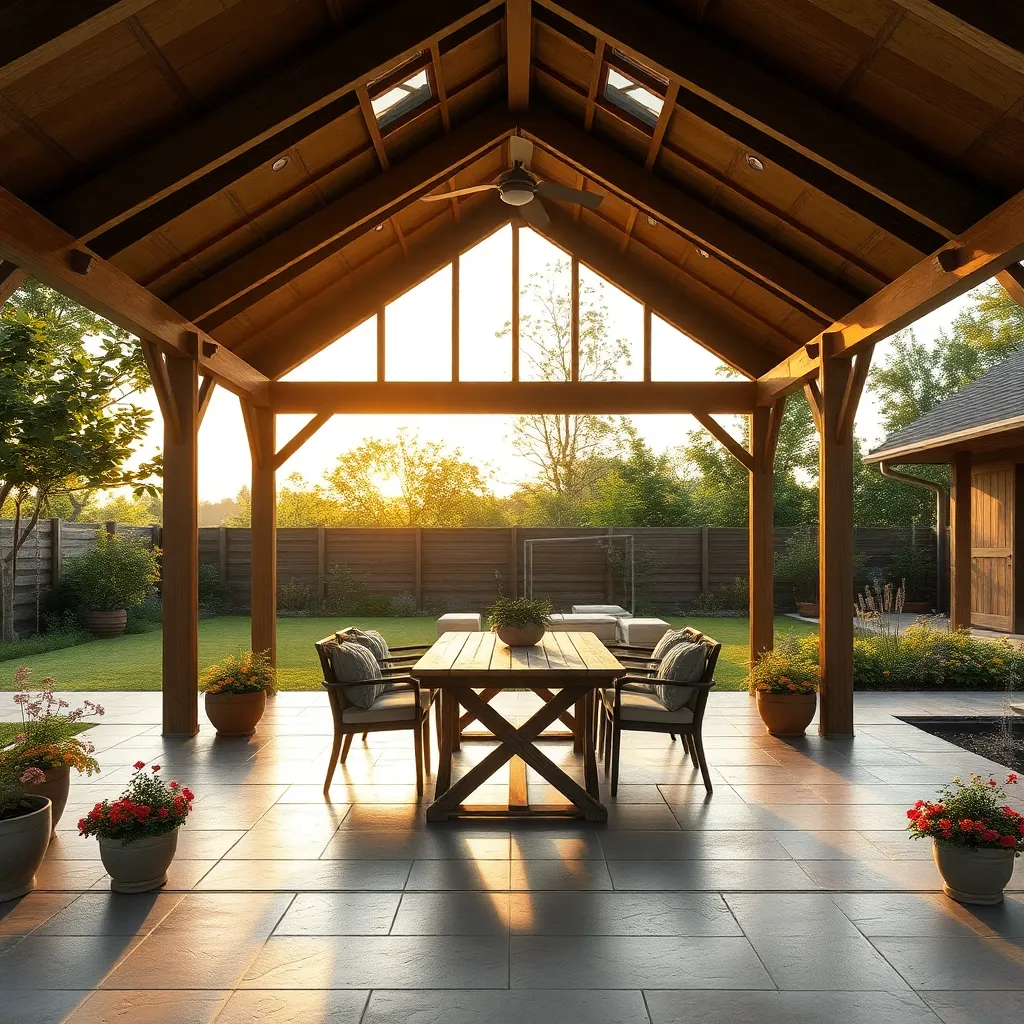
To create an open-plan layout for your gazebo, start by using a minimalist design approach that emphasizes space and light. Select materials like glass or acrylic panels combined with lightweight aluminum or treated wood frames to keep the structure airy yet sturdy. Consider positioning your gazebo to maximize natural light, and if privacy is a concern, use strategically placed trellises with climbing plants like jasmine or clematis, adding both beauty and function.
For those looking to enhance the open feel, incorporating multi-functional furniture can be a game-changer. Choose pieces that serve dual purposes, such as benches with built-in storage or modular seating that can be rearranged easily. To define areas without closing them off, use outdoor rugs or planters to create subtle boundaries. These elements not only maintain the open-plan aesthetic but also offer a practical way to organize your outdoor space effectively.
Delineate Spaces with Potted Plants
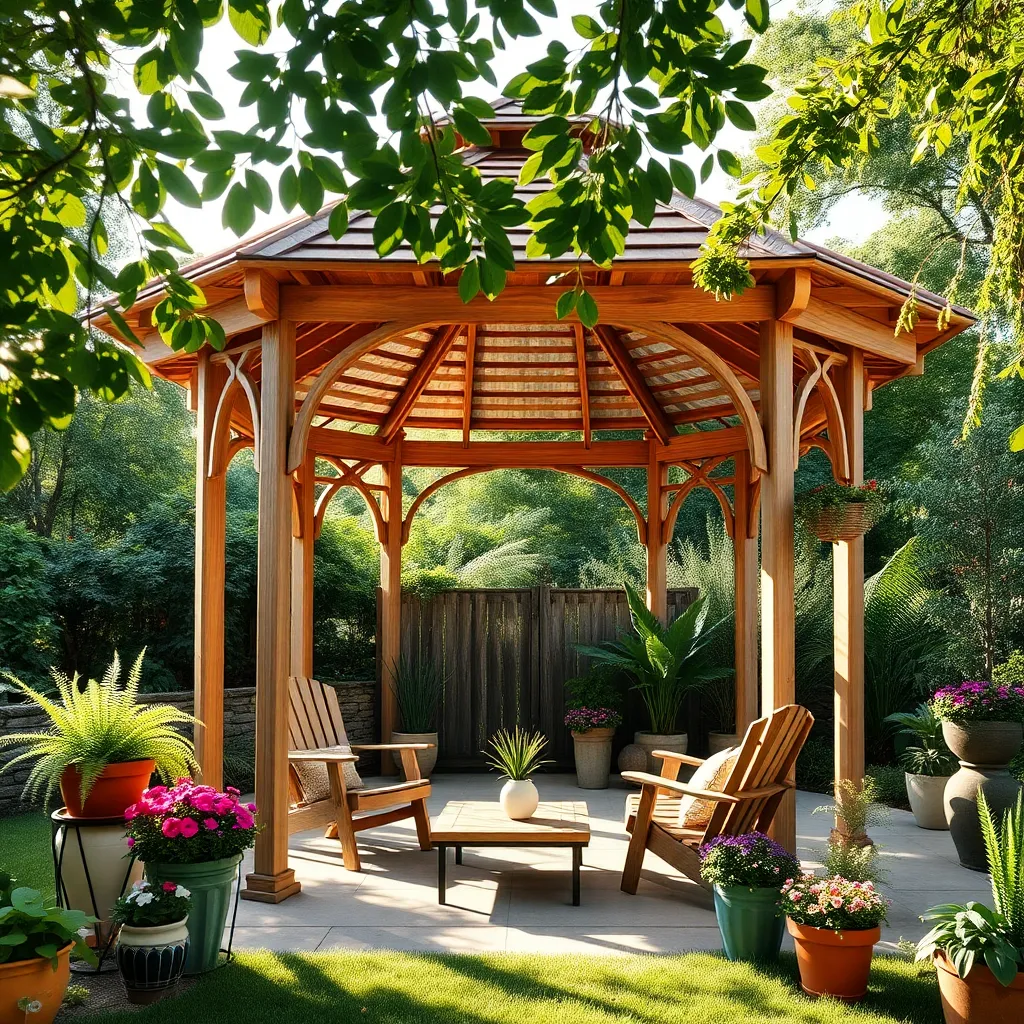
Potted plants offer a versatile way to delineate spaces within your gazebo area while adding natural beauty and tranquility. Start by selecting a mix of plant sizes and types, such as tall grasses, bushy shrubs, and cascading vines, to create a lush, layered look. Choose durable containers made from materials like terra cotta, fiberglass, or metal to withstand outdoor conditions and complement your gazebo’s style. For beginners, consider using lightweight pots with drainage holes to make repositioning easier and prevent waterlogging.
Incorporate your potted plants strategically to define specific zones, like a dining area or a cozy seating nook, within your gazebo. Use groupings of three to five pots to create visual boundaries or place a single large pot as an anchor point. For an advanced touch, coordinate the plant colors with your gazebo’s decor or use fragrant plants, such as lavender or jasmine, to enhance the ambiance. Remember to maintain your plants with regular watering, suitable fertilizers, and occasional pruning to keep them thriving as a dynamic, living element of your outdoor space.
Include a Central Fire Feature
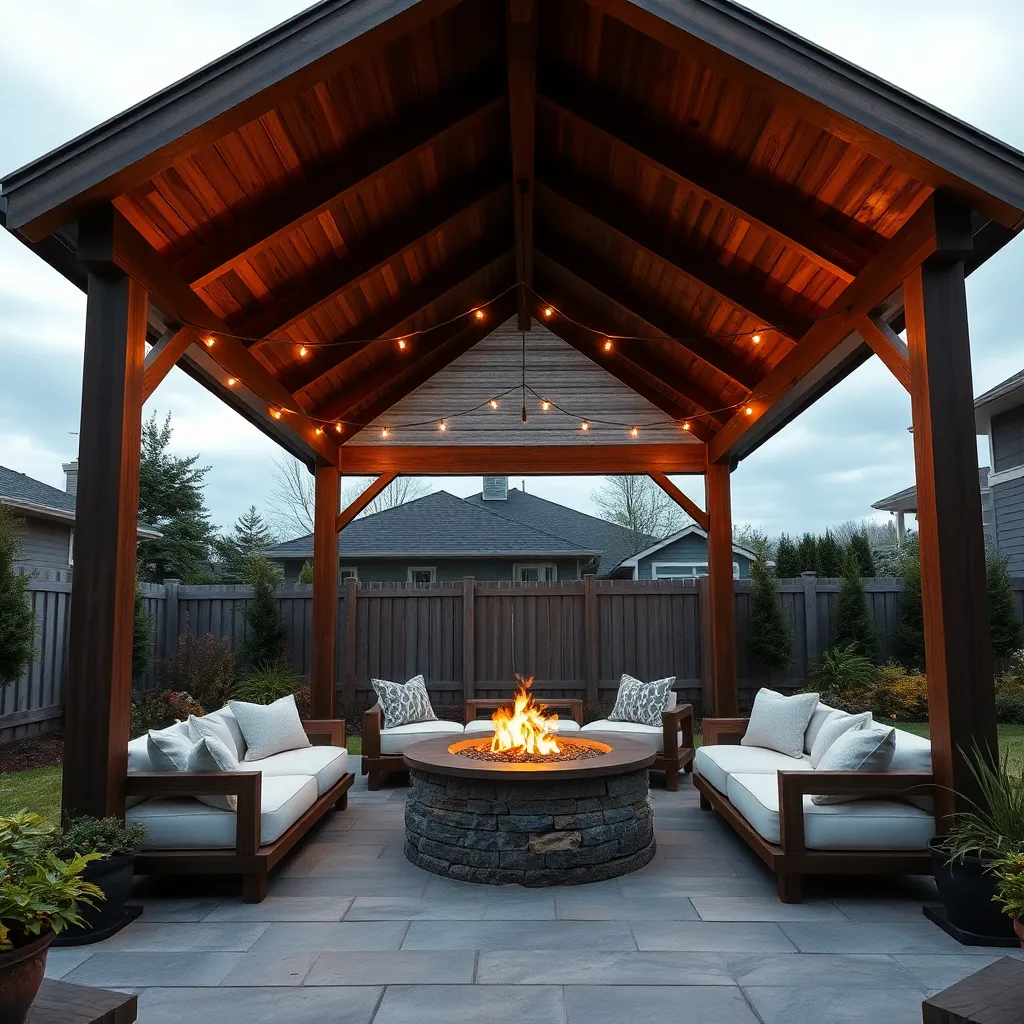
Adding a central fire feature to your gazebo not only enhances its aesthetic appeal but also extends its usability into cooler seasons. Consider options like a built-in fire pit or a portable fire bowl, which can serve as a stunning centerpiece. For a permanent solution, use durable materials like stone or brick that can withstand high temperatures and weather conditions. Beginners might start with a simple metal fire bowl or chiminea, which are easy to set up and maintain. Ensure that the fire feature is placed at a safe distance from the gazebo’s wooden elements and any flammable decorations.
For those with a knack for design, consider incorporating a multi-functional fire table that doubles as a dining surface. Opt for a model with adjustable flame controls and a sturdy, heat-resistant top surface. To create a cozy atmosphere, arrange seating in a semi-circle around the fire feature, ensuring there’s enough room for movement and comfort. Advanced DIYers might explore integrating gas lines for a more sophisticated setup, but always prioritize safety by consulting with a professional if needed. A well-placed fire feature can transform your gazebo into a year-round retreat, offering warmth and ambiance for any gathering.
Conclusion: Creating Beautiful Outdoor Spaces
As we explored the ’12 Gazebo Design Ideas for Your Next Project,’ each concept presented a unique opportunity to enhance not just your outdoor space but also your relational dynamics. We delved into the importance of choosing the right style that reflects your personality, incorporating functional elements like seating for intimate conversations, and adding lighting for creating enchanting evening atmospheres. We also discussed the value of incorporating nature-inspired elements to foster tranquility, creating inclusive spaces to strengthen bonds, and ensuring your gazebo is a haven that invites meaningful interactions.
Now, take the first actionable step: choose one design idea that resonates with your relationship goals and start planning how to incorporate it into your project. Whether it’s adding a cozy nook for heartfelt talks or integrating a communal table for shared meals, make it a priority this week.
Remember to bookmark this article as a resourceful guide for your journey. As you bring these ideas to life, envision a future where your relationships flourish, nurtured by the thoughtful spaces you create. Embrace this opportunity to transform your gazebo into a catalyst for deeper connections and lasting memories. Your commitment today lays the foundation for tomorrow’s relational success.
